Behind the Scenes With: Chelsea Carson of Daughter Judy Patterns
Tell us a bit about yourself.
I grew up in the south with a father in finance and a mother who was a chemist so how I ended up in fashion is still kind of a mystery. I did grow up around multiple generations of women who sewed, crochet and quilted, like most of us probably did in the 80s & 90s, so it was most likely ignited by them. We moved often (I’ve lived in 8 different states) which has made me pretty adaptable, something I hated as a teenager but appreciate now as an adult. Currently I live in the Hudson Valley of New York with my dog Olive where I split my time between work and things that ground me; digging in the garden, out on a trail or getting back in the saddle after two decades away from riding.
What’s your path? How did you arrive at pattern making as a business?
I fell in love with pattern making in college. It had never occurred to me that there’s someone behind the tissue patterns I had been using for years. When I graduated from college I found it hard to find any sort of entry level job in pattern making in New York City so after a few years at Ralph Lauren doing production, and on the advice of the pattern makers there, I went to Milan for a year of intensive training.
Once I returned I started working with brands and have never looked back. As much as I love designing and being creative I grasped the math behind pattern making easily and really enjoy the problem solving process. Right before covid I had stumbled into the indie pattern world and thought it would be an easy way to make a bit of money on the side. Over 3 years later, Daughter Judy is now my full time job and the freelance has become secondary.
Describe your normal working day.
Every day is so different but a typical day currently starts with coffee and straight into my inbox and DM’s to answer questions and respond to emails. I’m a morning person so this is usually 7 / 7:30 am. Then I try to block my days into task 1 in the later morning (9 – 12) and task 2 for the afternoon (1 – 4). I like to block the morning task for continued computer work (pattern auditing, Substack writing, calendar planning, etc.) since I’m most likely still in computer headspace and am probably having a virtual meeting with my development manager, knitwear designer or marketing editor.
Then the afternoon comes and I get into my “less productive” time frame of the day so I try to keep things physical and get out of my house. Right now I’m working on opening a fabric shop in Kingston, NY so I’ve been going down there to organize, decide on paint color (the world’s hardest task) and planning the build outs. Or if we’re in development I’m at the pattern making software computer working on patterns, grading, culling the data for those patterns for my developers, etc.
How does it feel to be doing what you love?
It’s really surreal. Like I mentioned, I thought this was going to be a creative side outlet so it still amazes me that it’s been able to shift into the full time focus. I also lean type A (oldest sibling, Aries, Year of the Tiger, etc.) which means working for myself works way better for me so I’m super grateful to have this opportunity.
What are the hardest aspects of owning your own business?
Finding time to sew for myself, turning my brain off and trying to answer peoples questions as fast as I’m able to. I think with time and growth these two will start to lessen but those are the areas that I haven’t quite been able to master or make space for.
What do you enjoy the most?
Interacting with the makers and helping them achieve success in their sewing. I know that I’m the holder of a lot of information regarding my patterns so I try to make it super clear that I am always available to help. When I get emails saying someone’s never had a pair of pants fit them so well or they successfully did something they thought was scary it really gives me so much joy. A lot of people sew because mass market clothing fits poorly or their size doesn’t even exist. I love being able to be a part of those prideful moments for them.
What is your proudest moment?
Recently it was signing the lease for my shop. Daughter Judy has made it possible for me to bring this idea of someday owning a shop to life and for that to happen earlier than I had anticipated was a hugely prideful moment.
What are your most successful 3 patterns? What do you think makes them popular?
Can I say the Coe trouser for all 3? That one has blown all other patterns out of the water and I think they just came at a time when people were looking for new age tailoring in their wardrobe. They hit on the barrel trend without being too barrel-y, have clean lines and I think the added belt for styling makes them feel more elevated.
The other 2 would be the Genra shirt and Worship jeans. It’s been interesting because the audience is always asking for more fun patterns but in reality it’s those wardrobe staples that sell the best and make it financially possible to even be able to create the fun patterns.
Tell us about your process, from idea to pattern.
The idea always comes from 2 different directions, one boring and one creative. I am always looking at what sells because to spend the time and money on a pattern that isn’t going to sell isn’t exactly great for business, the boring part. (However I do always leave room for experimentation throughout the year.) The creative part comes from looking at what I’m personally missing in my wardrobe or what I’m looking to shop for that leans more towards current trends.
Using the Henry skirt as an example I have been wanting more skirts in my wardrobe but it needed to be slightly utilitarian in order for me, a pant lover, to wear it. I wanted more than just a straight skirt and was playing around with ways to add dimension so I landed on the tubular wrap construction. This is the first stab at development and I’ll work through a few rounds of samples that I fit on myself. During the development I am writing the steps for my developer to translate into the images used in the instructions.
Once that’s nailed down it gets graded and I check the fit on our plus fit model before it goes into testing. I’m now working with a small team of private (paid) testers that give very detailed feedback and are in a wide range of sizes. After they’ve completed the testing we go back and make any changes to the pattern and work through verbiage in the instructions for the best clarity for the customer. A photoshoot happens at some point (it’s all a blur), work gets done on the back end of the website and then it’s out into the world!
Who is your customer and how do they find you?
My customer can be anyone but I like to define them as someone who can curate styles for the moment but use for a lifetime. They are thoughtful in how they dress and how they’re building out their wardrobe for longevity. They are cool, off-beat, smart and interesting while also being unsure, complex, mysterious and maybe a bit messy. Real people.
One of the greatest things about home sewing is the online community and word of mouth. Thanks to places like Instagram and Threadloop, a lot of my customers have found me via others who share their makes.
Do you have a mentor who guides you?
Not a single person but I do have people in my life that I have great thought partnerships with. It may surprise people reading this but a lot of us indie designers chat often, share advice and work through our trials and tribulations together. I also have a lot of industry people from my past that I bounce ideas off of and who run from smaller brands like Apiece Apart to behemoths like Nike.
What are your plans for this year? Are you intuitive with where you are heading, or are you a rigid planner?
I would say I’m a flexible planner. One of my favorite things to do at the end of the year is build my calendar out for the next. By mid fall the designs for the next year are done and I’ve worked my way through SWOT analyses and OKR’s. However, things happen and it’s so much easier to pivot confidently than spiral. I had plans to amplify the knitting category this last month but it’s now pushed to fall. I was hoping to launch Men’s sooner but I’m working through more fittings than I expected.
The biggest thing on my plate for the year is getting my fabric shop opened sometime this summer. Most importantly with the shop is starting to teach classes which was the real intention behind starting that journey.
What does success mean to you?
Success to me means waking up every day looking forward to and feeling fulfilled by the work ahead. It means having found a supportive community who work through things in a positive and productive way.


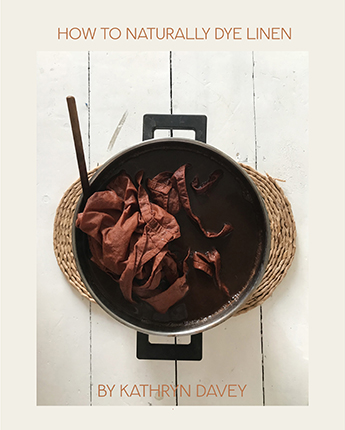
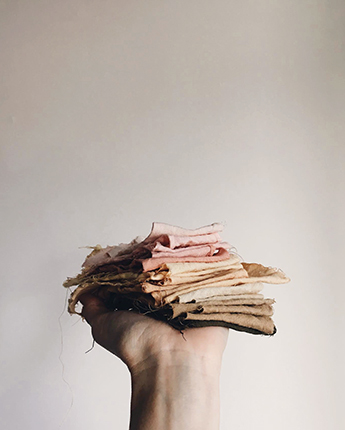

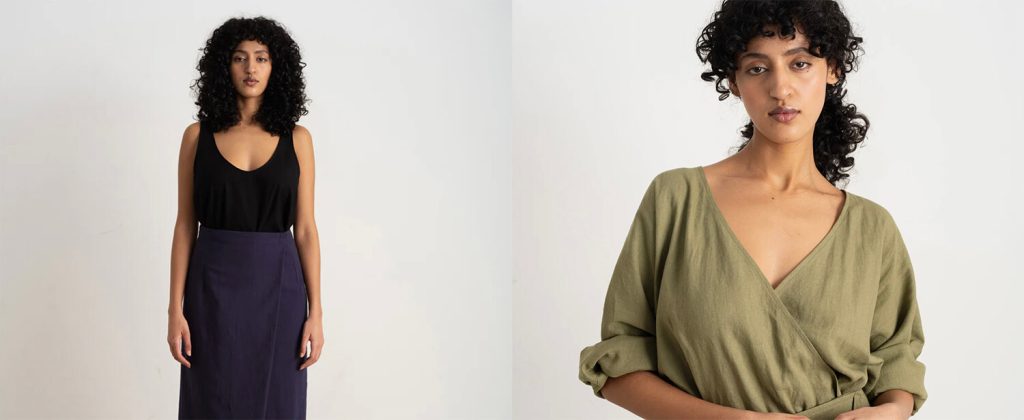
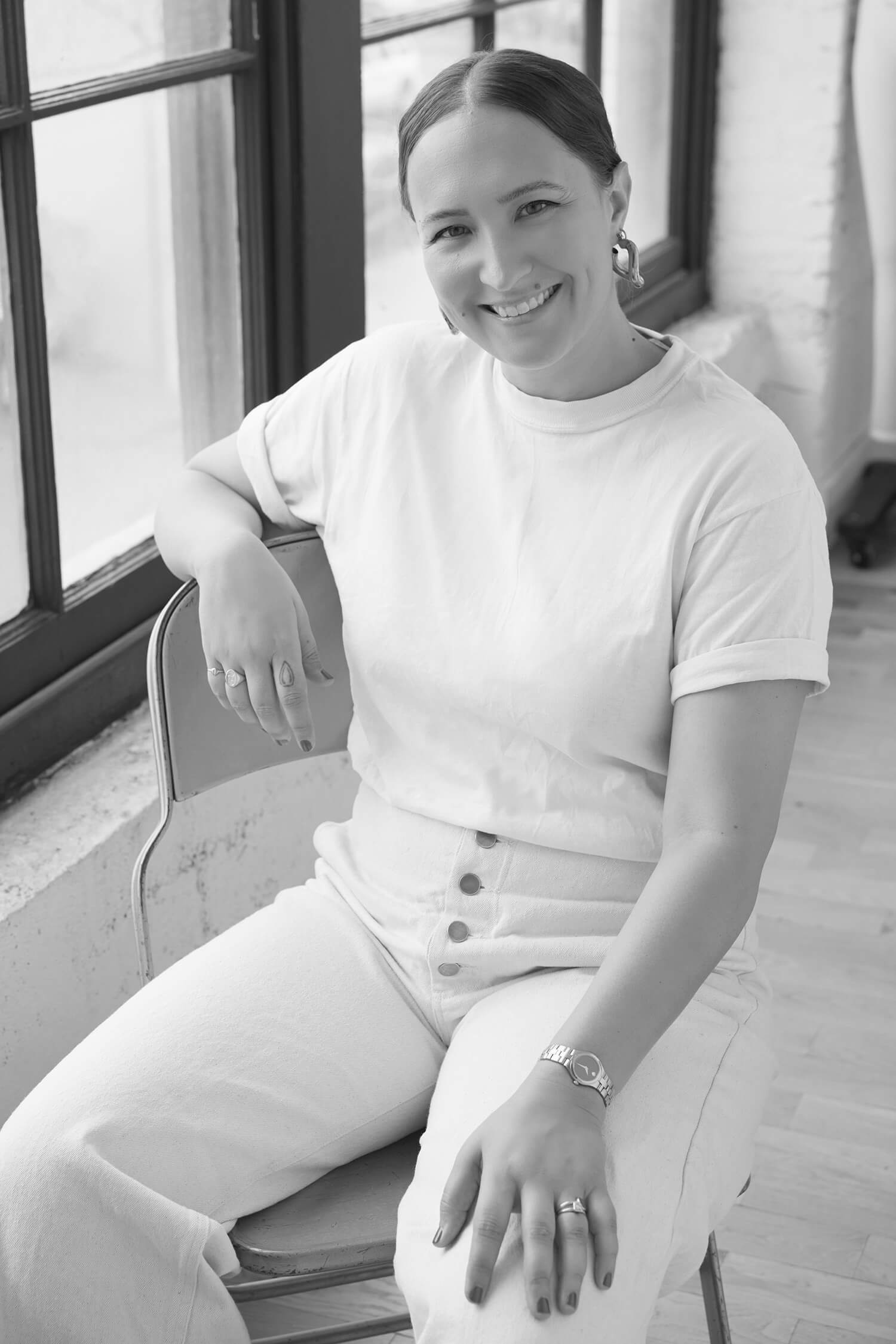
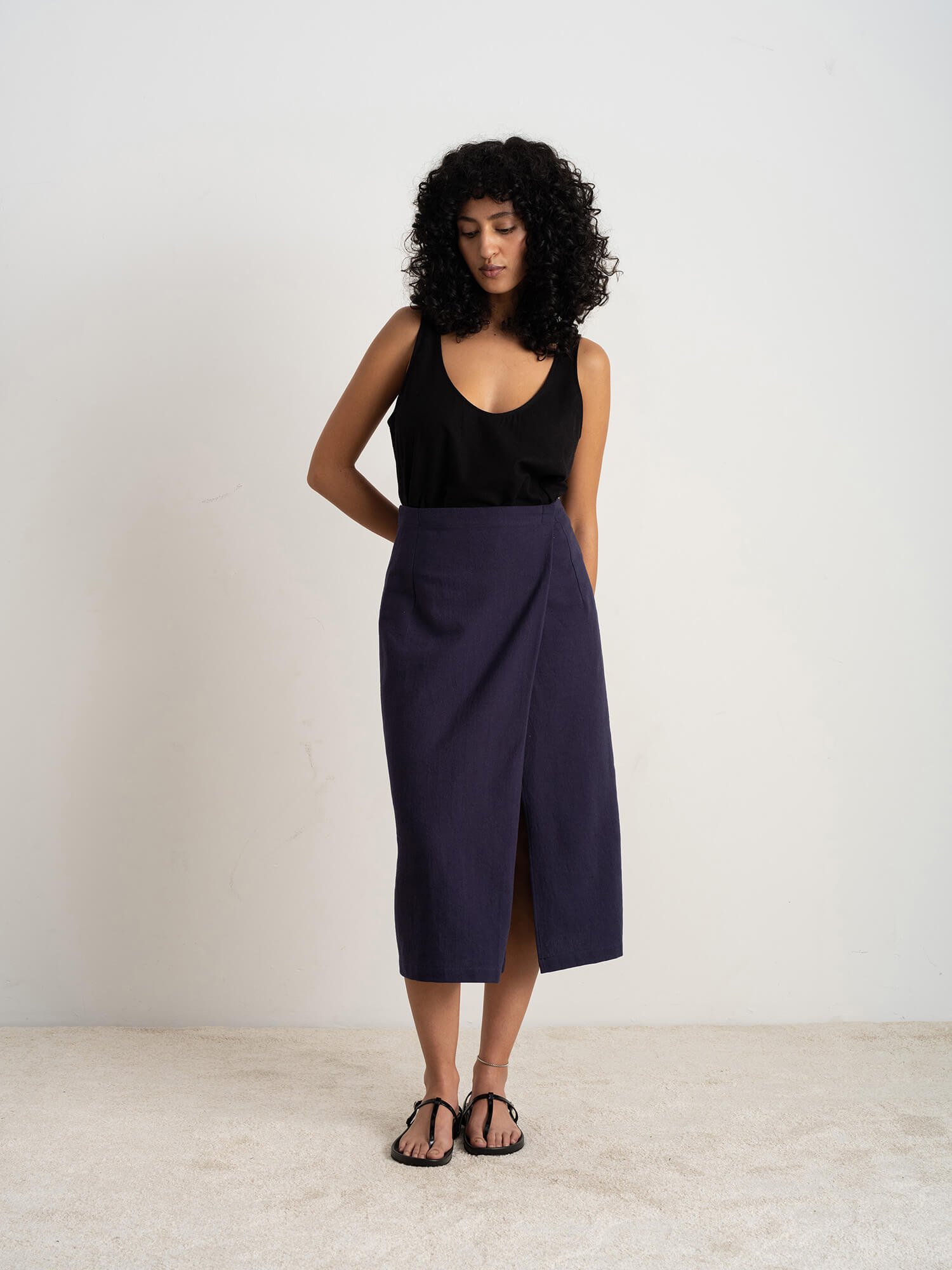
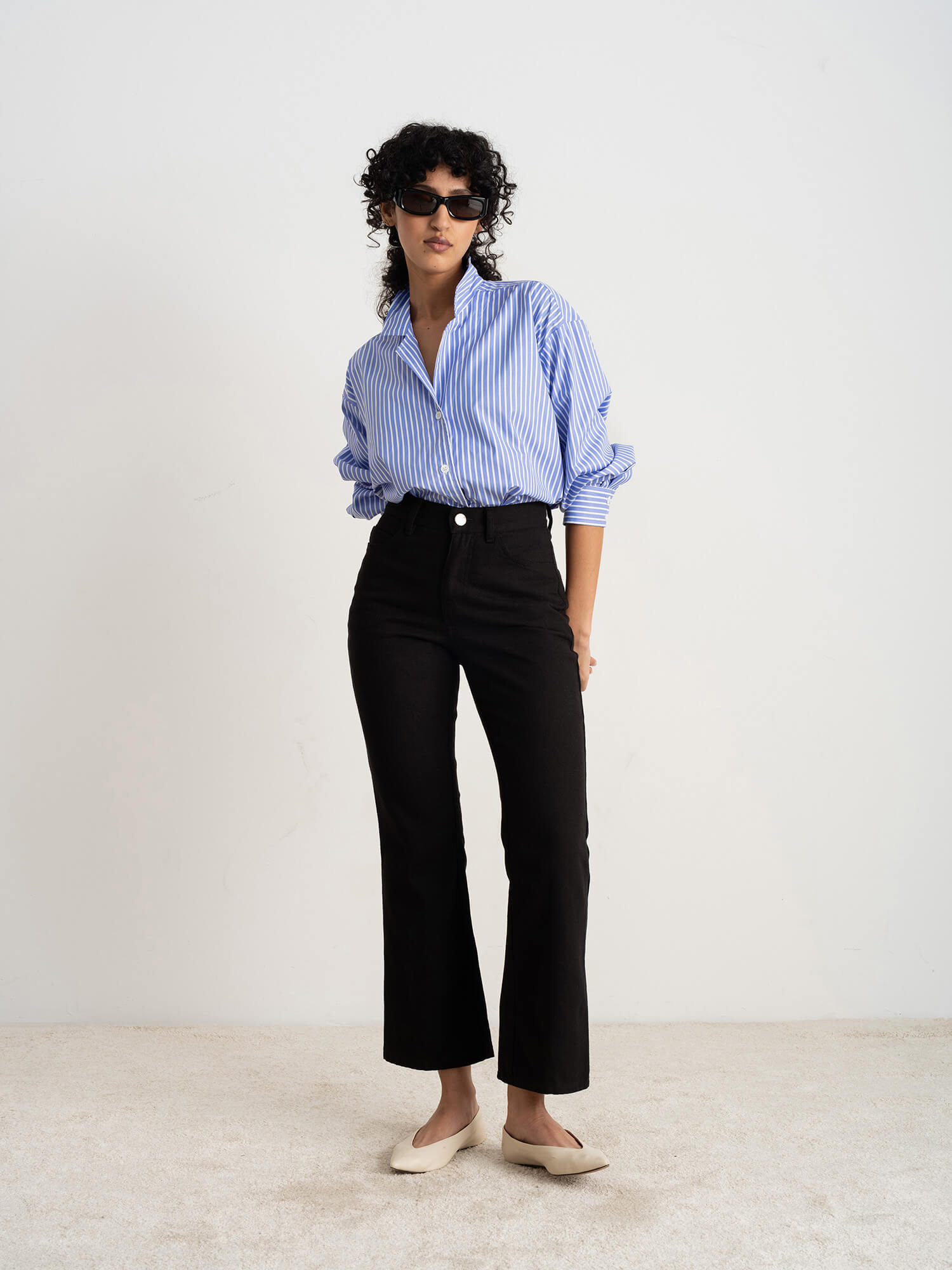
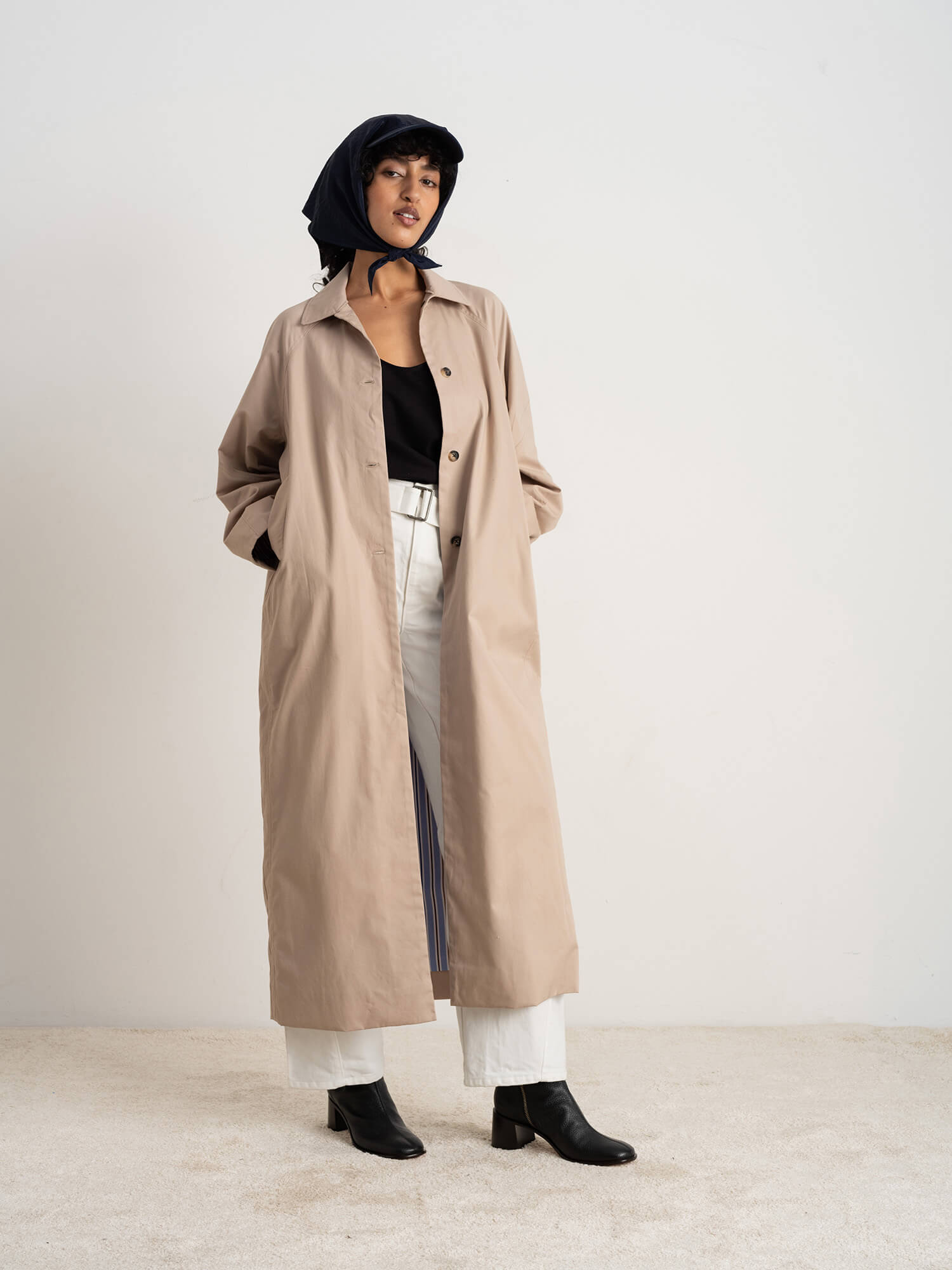
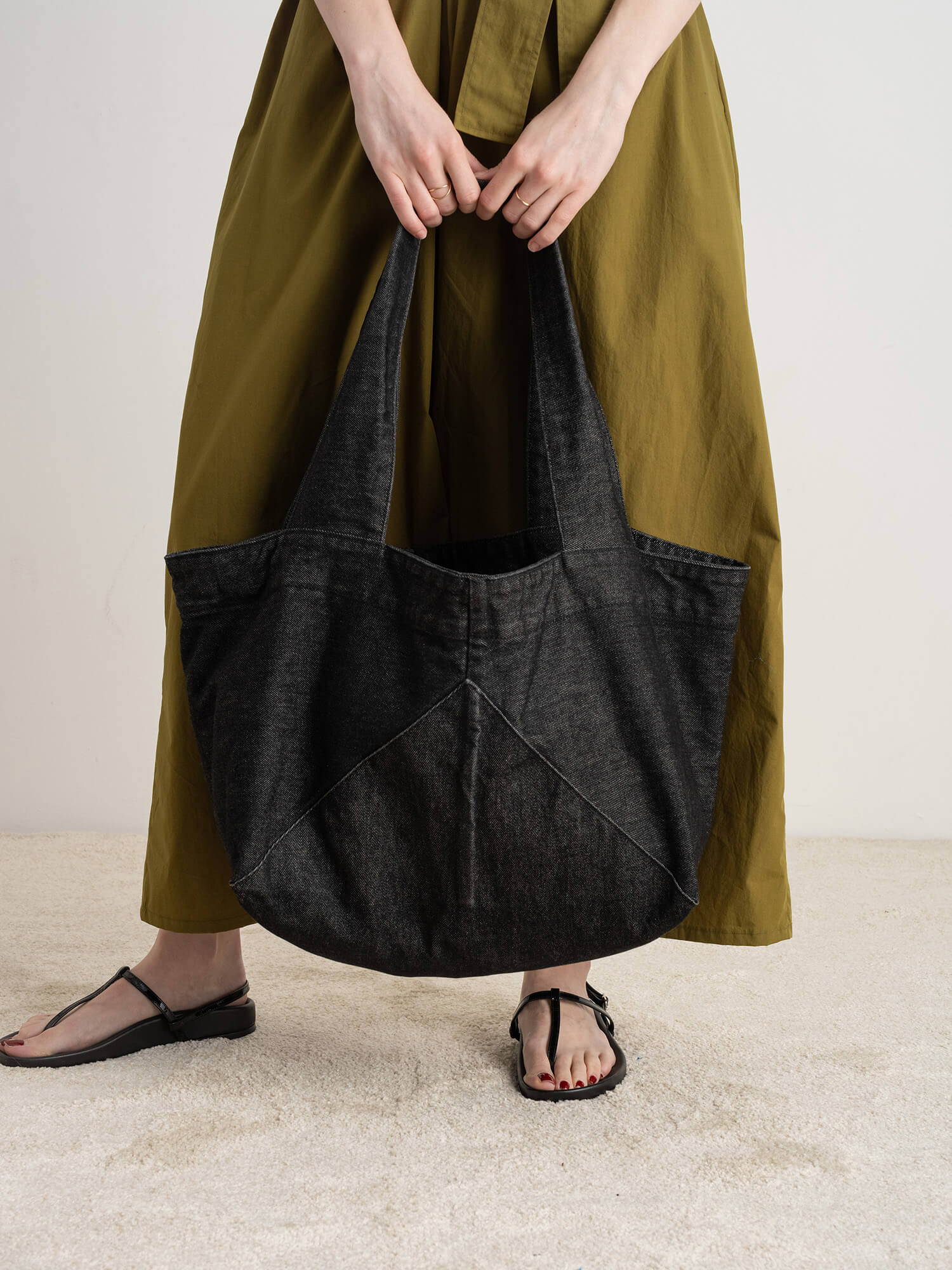
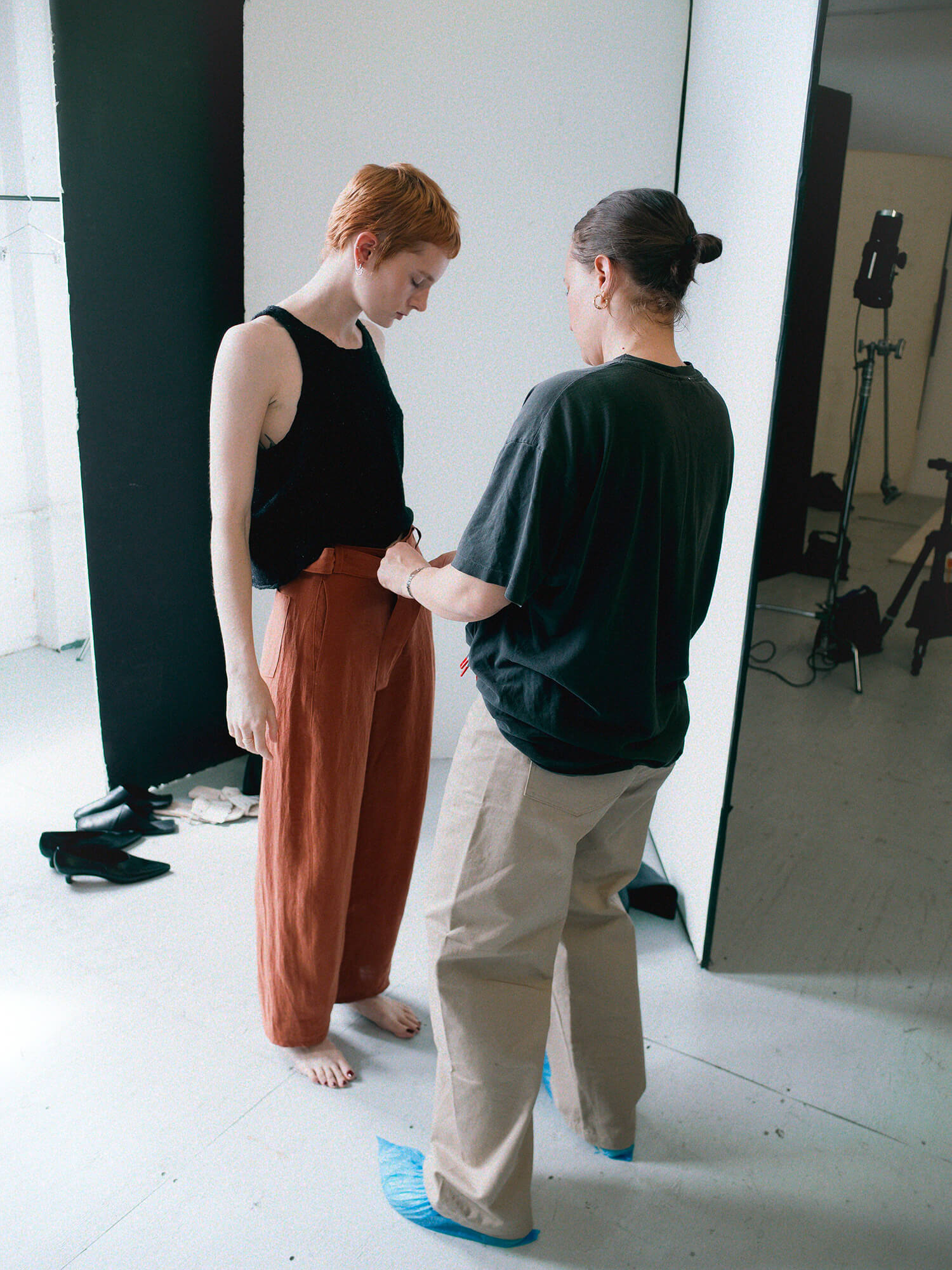
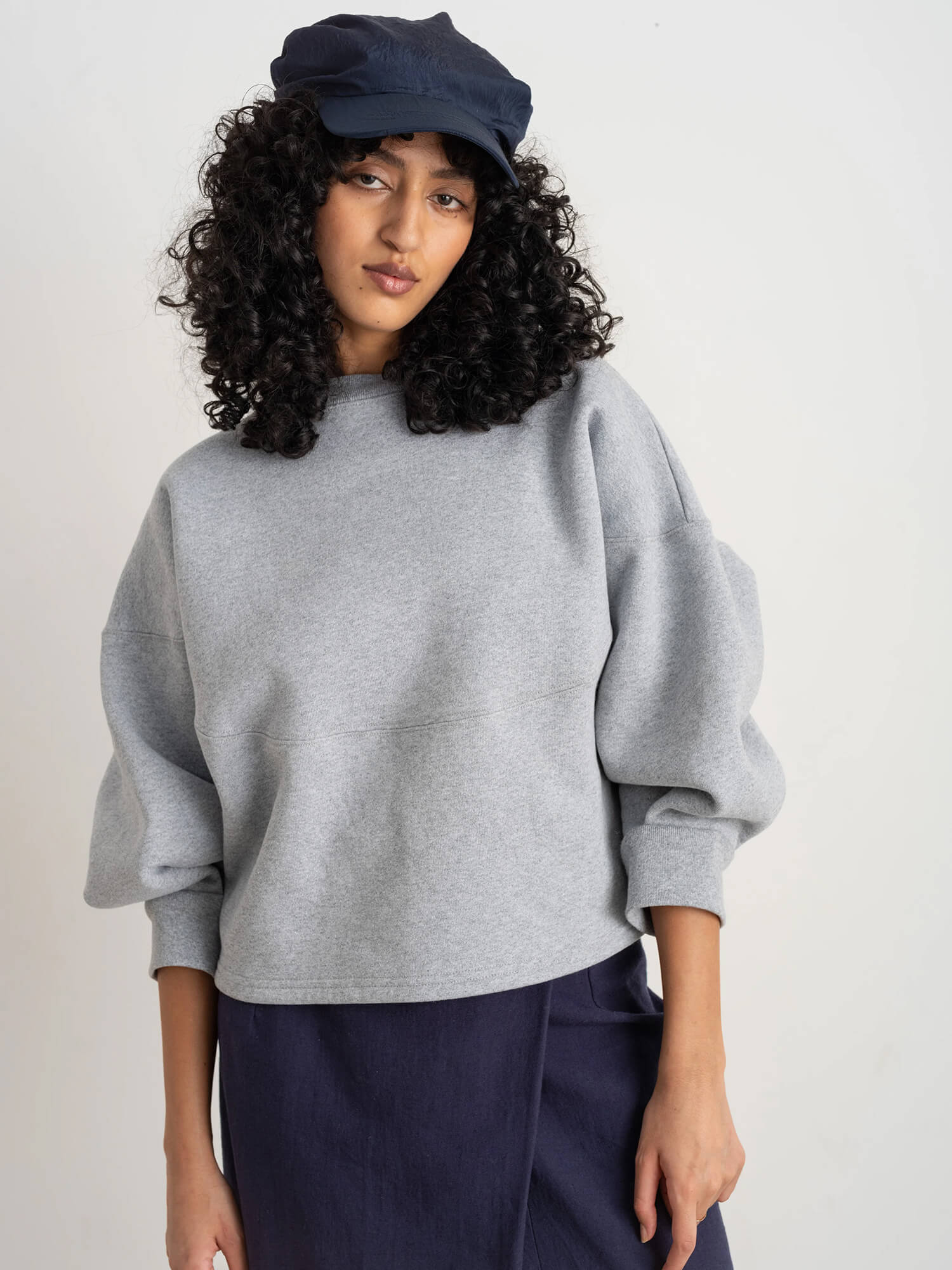
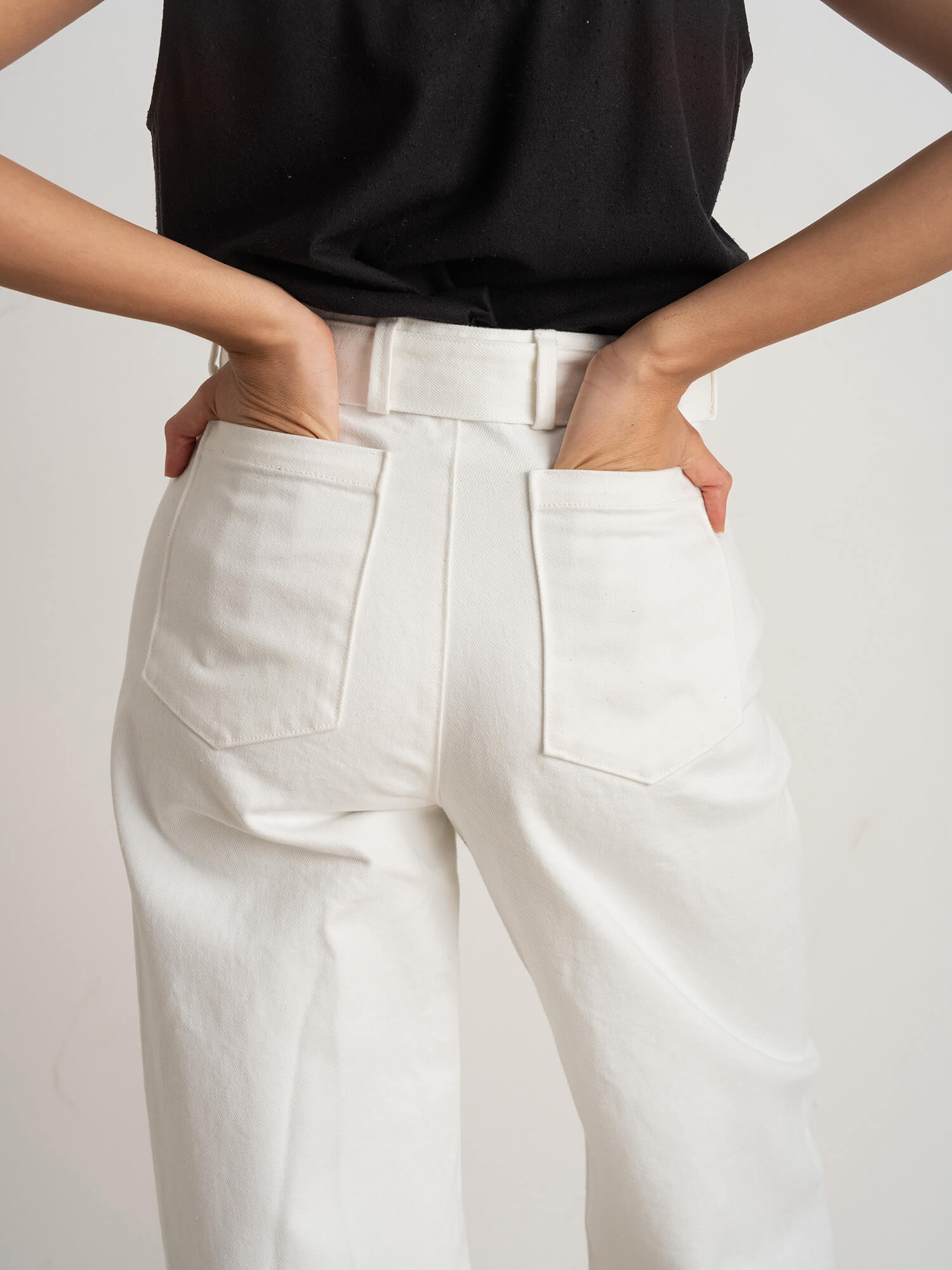
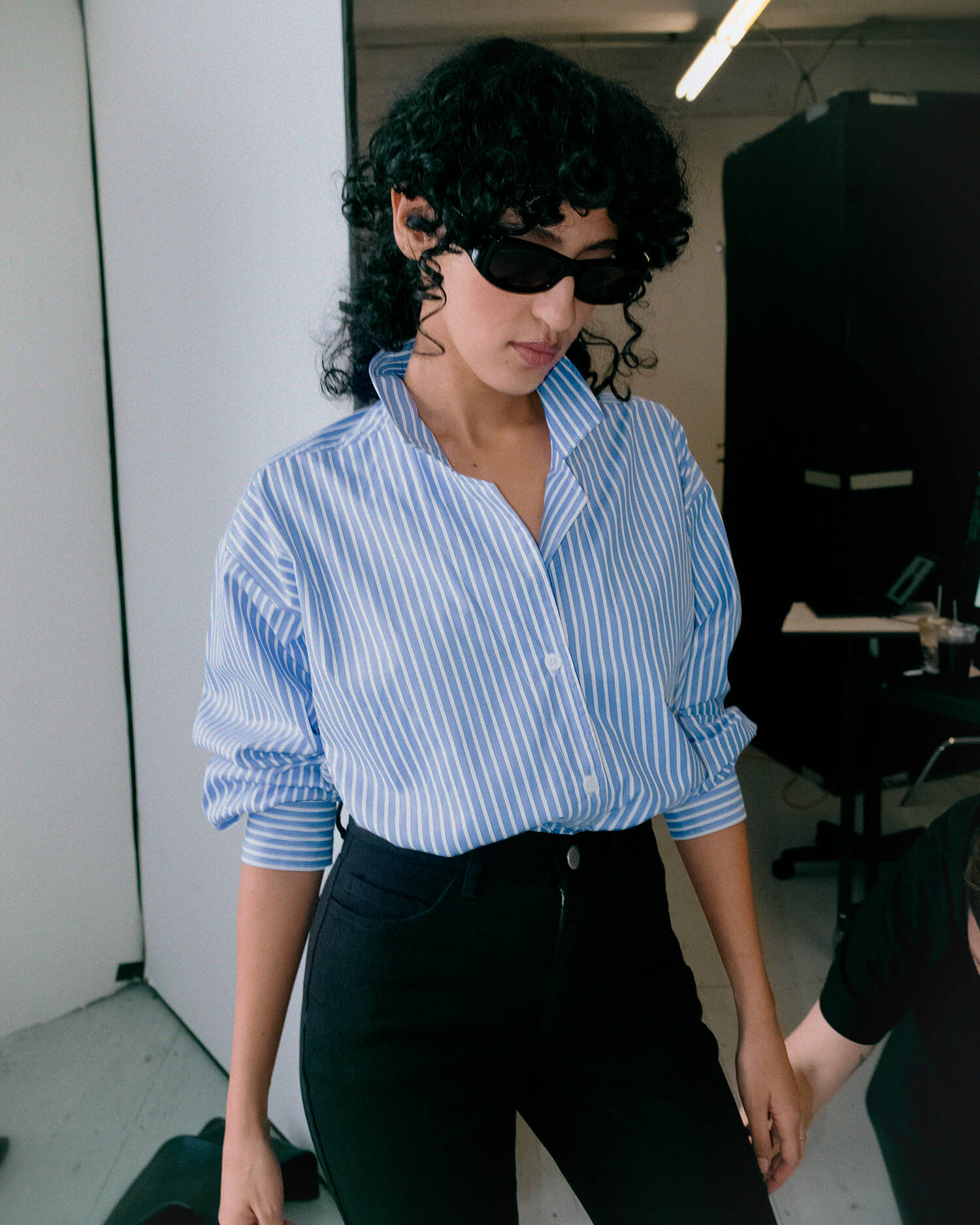
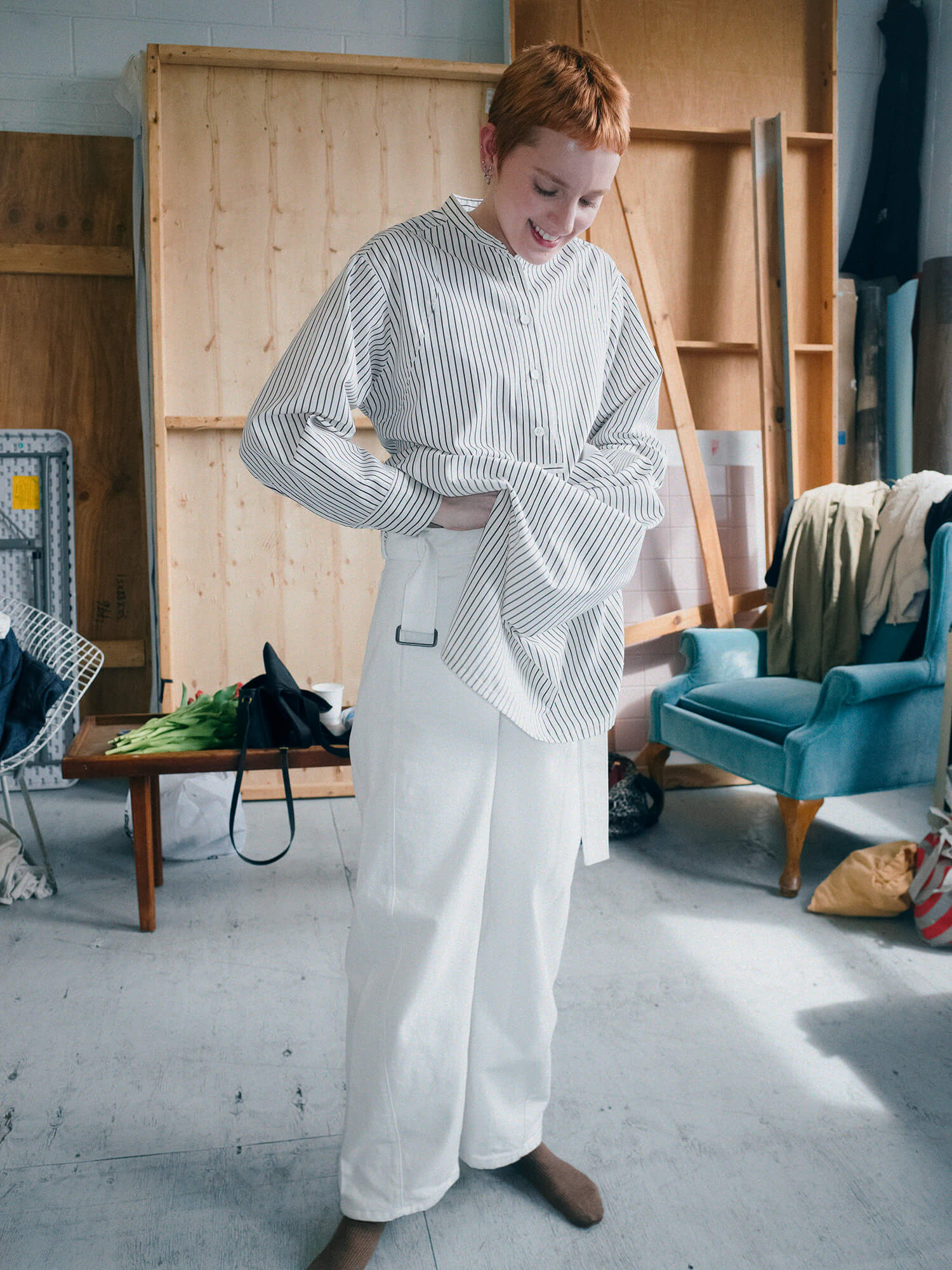
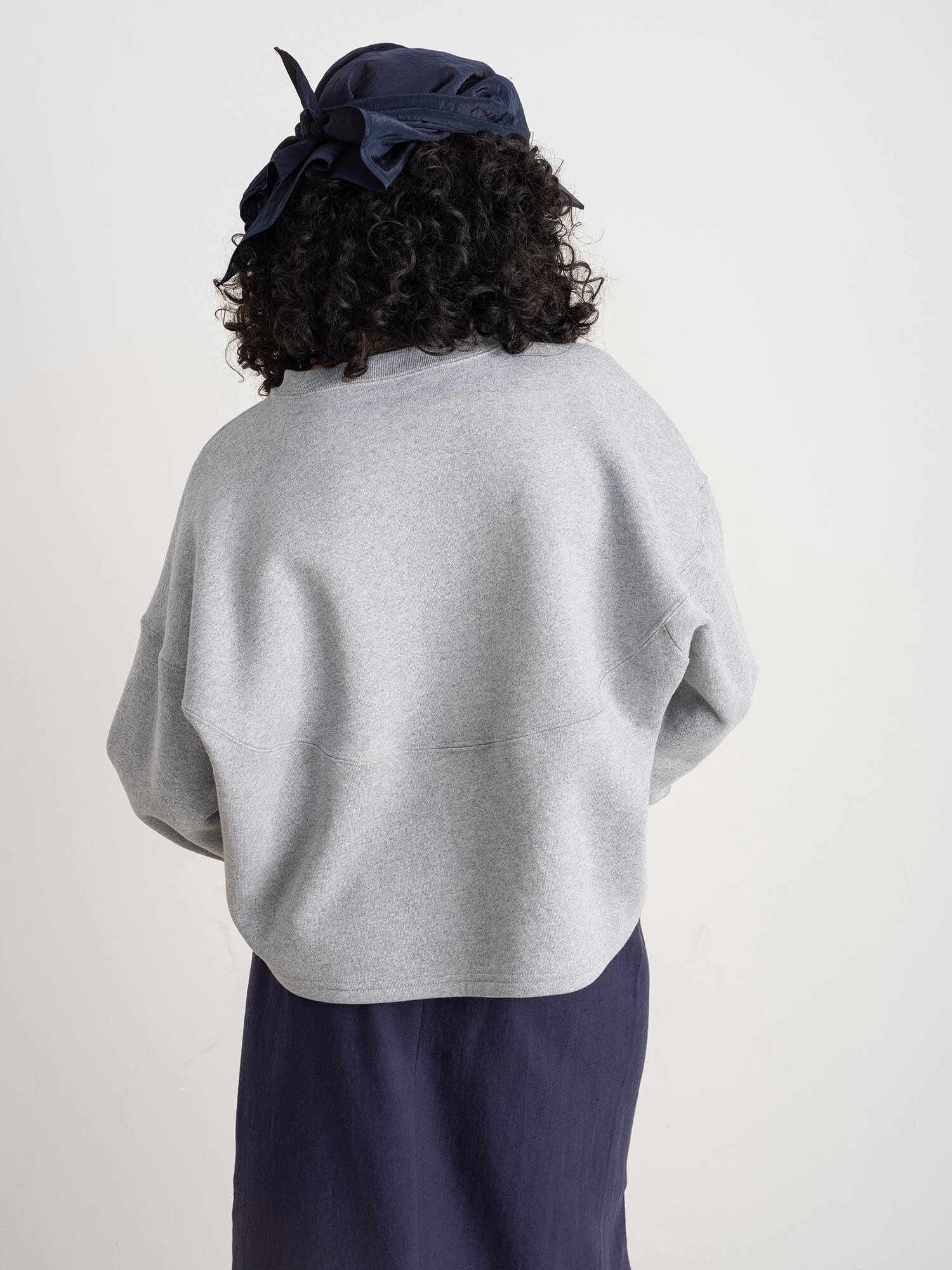
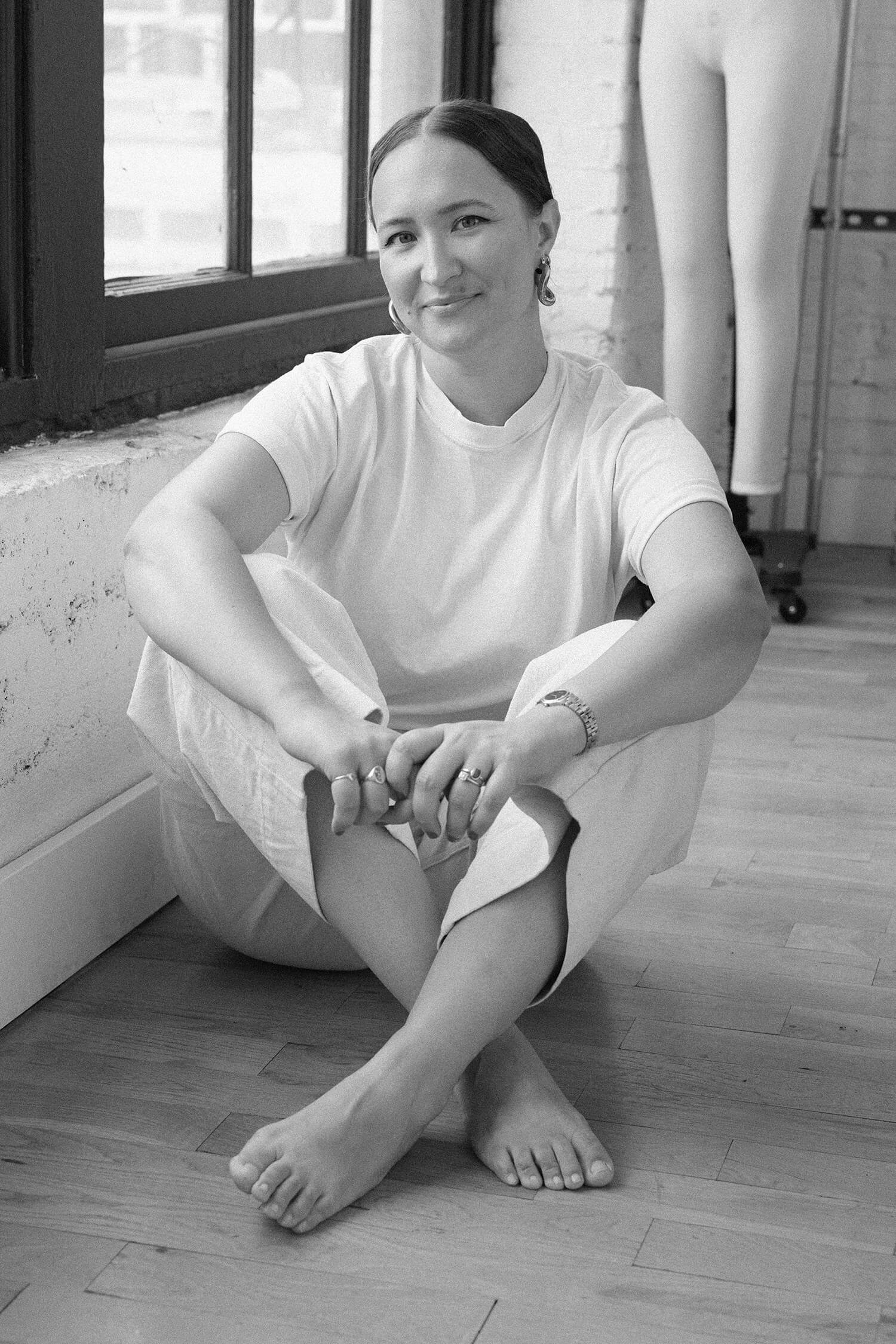
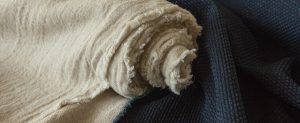
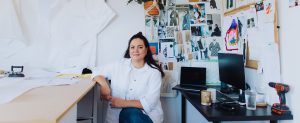
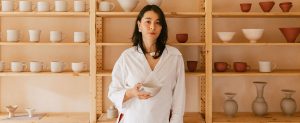
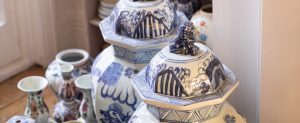
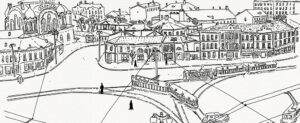




































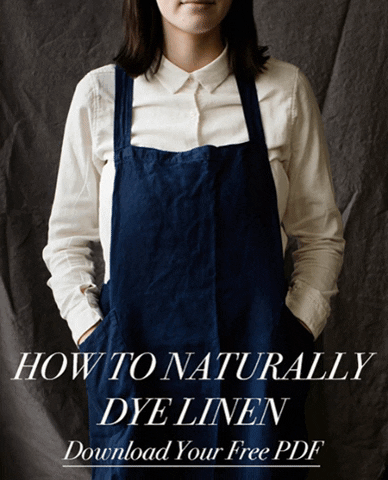

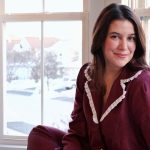
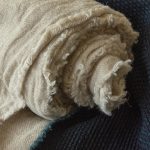

2 Comments
Maureen Christensen
I am over the moon to read that you will be opening a fabric shop in Kingston, New York! One of my all-time favorite makes is the Genra shirt pattern and it will be lovely to see and feel the fabric again before making a selection… my last Genra was a beautiful linen from fabric-store and it drape’s perfectly. I wish you all the best Chelsea and hope to meet you in person someday.
Kathy Brothers
What a great series! I was not aware of Daughter Judy patterns, but I visited the website and am now in love! I will be a customer, and look forward to shopping in person when the fabric shop opens! Thank you fabrics-store.com for introducing me to such creative forces!!!!